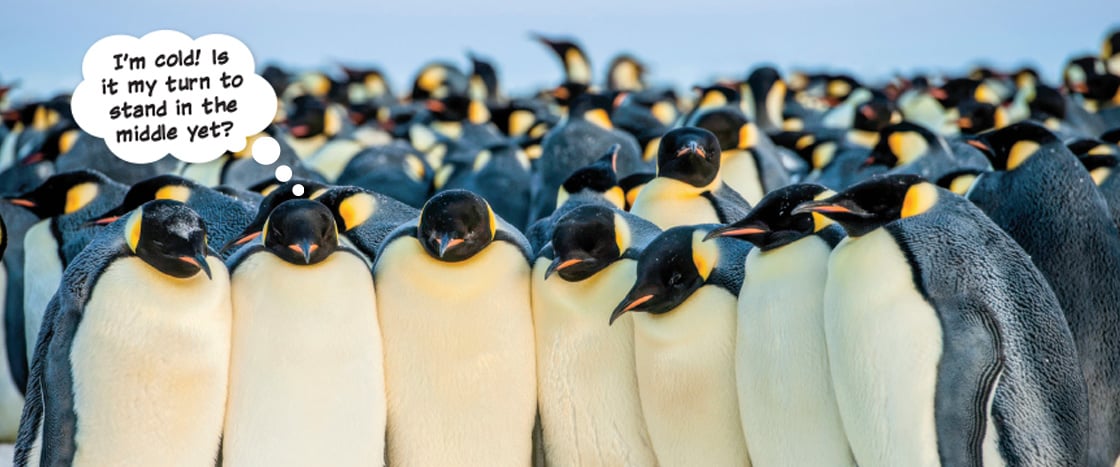Stefan Christmann/Minden Pictures
Emperor penguins: "I’m cold! Is it my turn to stand in the middle yet?"
Emperor penguins live in large groups on frozen sea ice in Antarctica. There, winter temperatures can drop to -58° Fahrenheit (-50° Celsius). That’s really cold—even for a penguin! To keep warm, the animals often huddle up. As many as 5,000 penguins can crowd together and stand that way for several hours. The birds take turns standing in the center, where they can keep their body temperature warmer.
Other birds and mammals huddle together to stay warm in the winter too. The strategy works because their bodies produce heat, explains biologist Terrie Williams. Heat escapes through the skin and breath, she says. When animals huddle up, the body heat released by each animal warms others nearby. Standing close together also leaves animals less exposed to the cold air, reducing heat loss.
Emperor penguins live in Antarctica. They form large groups on frozen sea ice. Temperatures can drop to -58° Fahrenheit (-50° Celsius) in the winter. That’s really cold—even for a penguin. The animals often huddle to keep warm! As many as 5,000 penguins can crowd together. They stand that way for several hours. The birds take turns in the center. That’s where they can stay the warmest.
Other birds and mammals huddle up to stay warm in the winter too. This works because their bodies produce heat, says biologist Terrie Williams. Heat escapes through the skin and breath, she says. The body heat given off by each animal warms others nearby. Standing close also leaves animals less open to the cold air. That means their bodies lose less heat.

